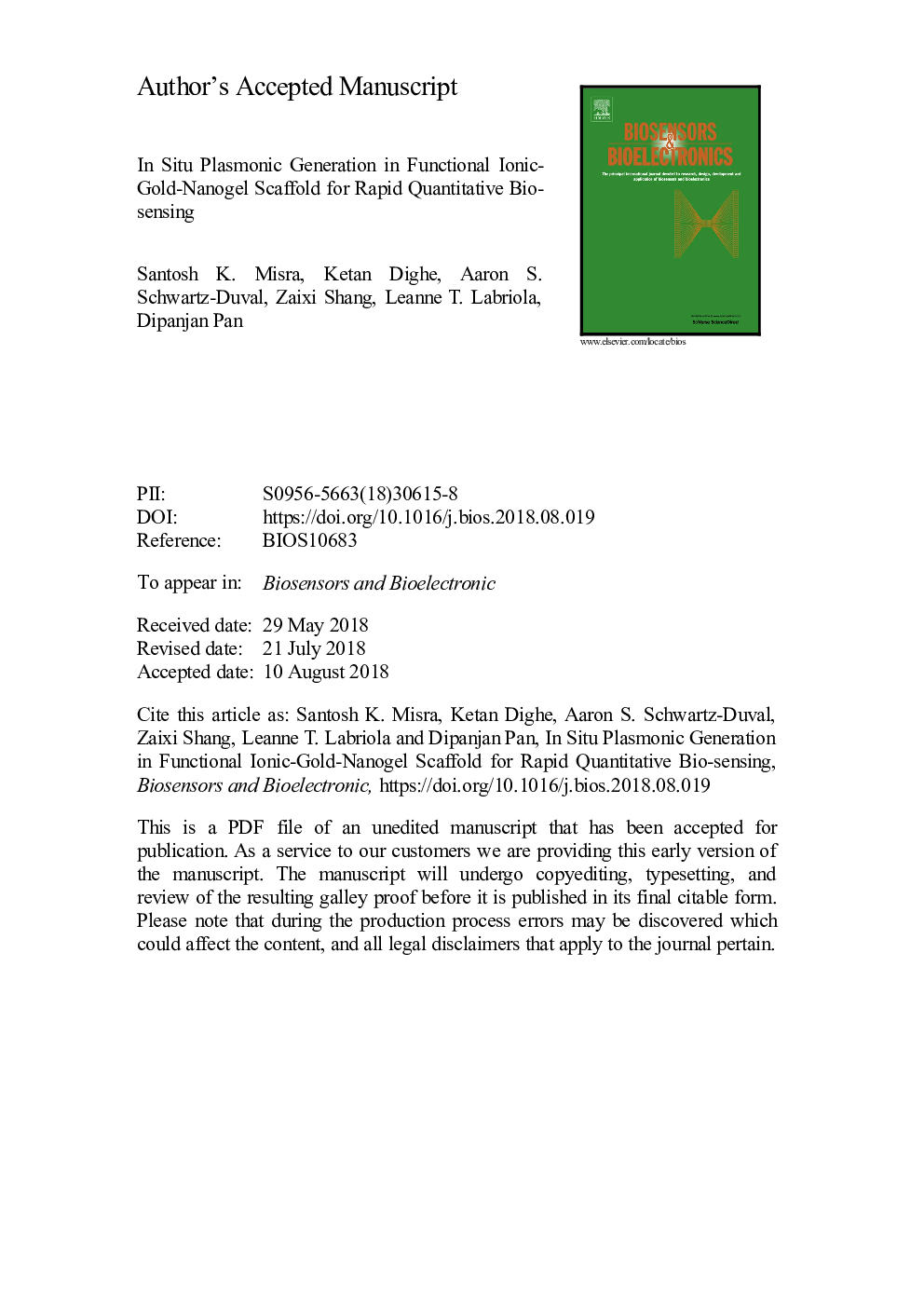| Article ID | Journal | Published Year | Pages | File Type |
|---|---|---|---|---|
| 8947799 | Biosensors and Bioelectronics | 2018 | 29 Pages |
Abstract
Conventional analytical techniques, which have been developed for high sensitivity and selectivity for the detection and quantification of relevant biomarkers, may not be as suitable for medical diagnosis in resource scarce environments as compared to point-of-care devices (POC). We have developed a new reactive sensing material which contains ionic gold entrapped within an agarose gel scaffold for POC quantification of ascorbic acid (AA) in tear fluid. Pathologically elevated concentration of AA in human tear fluid can serve as a biomarker for full-thickness injuries to the ocular surface, which are a medical emergency. This reactive sensing material will undergo colorimetric changes, quantitatively dependent on endogenous bio-reductants that are applied, as the entrapped ionic gold is reduced to form plasmonic nanoparticles. The capacity for this reactive material to function as a plasmonically driven biosensor, called 'OjoGel' (ojo-eye), was demonstrated with the endogenous reducing agent, AA. Through applications of AA of varied concentrations to the OjoGel, we demonstrated a quantitative colorimetric relationship between red (R) hexadecimal values and concentrations of AA in said treatments. This colorimetric relationship is directly resultant of plasmonic gold nanoparticle formation within the OjoGel scaffold. Using a commercially available mobile phone-based Pixel Picker® application, the OjoGel plasmonic sensing platform opens a new avenue for easy-to-use, rapid, and quantitative biosensing with low cost and accurate results.
Related Topics
Physical Sciences and Engineering
Chemistry
Analytical Chemistry
Authors
Santosh K. Misra, Ketan Dighe, Aaron S. Schwartz-Duval, Zaixi Shang, Leanne T. Labriola, Dipanjan Pan,
